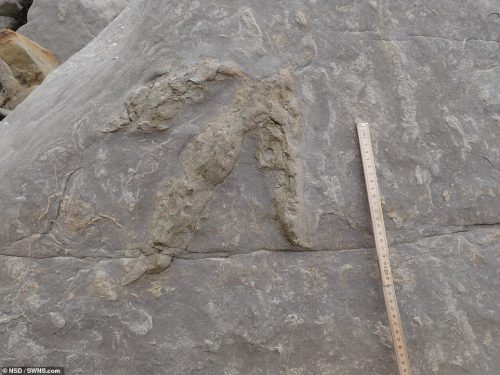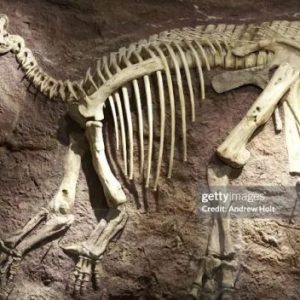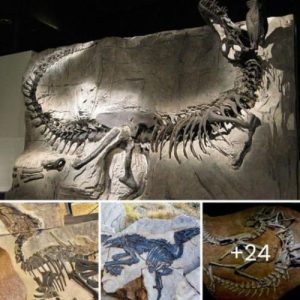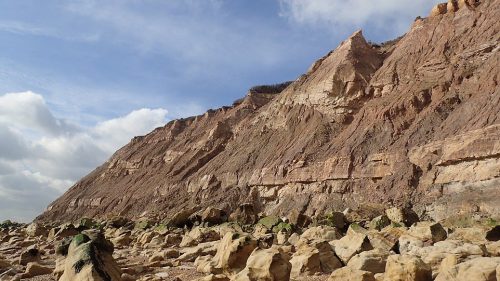
The earth’s history is written in stone, and sometimes, those ancient records hold surprises beyond our wildest imagination. Recently, a remarkable discovery on England’s south coast has unveiled a “treasure” of 145 million-year-old dinosaur footprints, offering a unique glimpse into the lives of these prehistoric giants. What sets these footprints apart is the remarkable detail they preserve, revealing not only the shape of the dinosaur’s foot but also intricate features like skin, scales, and claws. In this article, we delve into the fascinating world of these ancient footprints and what they tell us about the past.
A Rare Find on the South Coast
The south coast of England has long been known for its picturesque landscapes and stunning cliffs. However, the region has now become famous for another reason, thanks to the discovery of an extraordinary collection of dinosaur footprints. These tracks, preserved in the sandstone cliffs, date back an astonishing 145 million years to the Early Cretaceous period, a time when dinosaurs roamed the Earth.
The “Treasure” of Dinosaur Footprints
What makes these footprints particularly special is the level of detail they preserve. In some instances, the impressions include not only the shape of the dinosaur’s foot but also the intricate features of its skin, scales, and even claws. These discoveries offer a rare glimpse into the appearance and physical characteristics of the dinosaurs that once inhabited this area.
Deciphering the Footprints
The process of deciphering the footprints and their detailed features is a complex one. Researchers, including paleontologists and geologists, carefully study the tracks, taking precise measurements and creating detailed casts and 3D scans. These scans provide an accurate representation of the footprints, enabling scientists to analyze the size, shape, and details of the skin and scales.
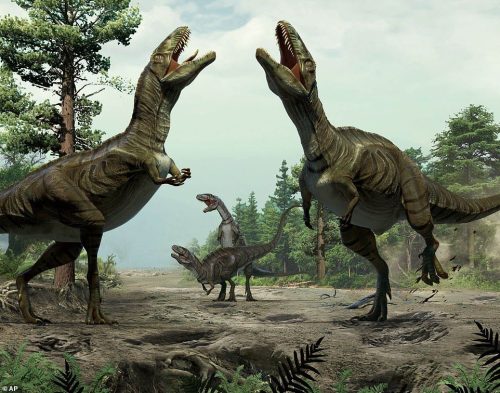
What the Footprints Reveal
The footprints provide valuable insights into the lives of dinosaurs that lived in this region during the Early Cretaceous period. Some of the key revelations include:
Dinosaur Species: By analyzing the size and shape of the footprints, scientists can identify the dinosaur species that left them. This, in turn, helps paint a more comprehensive picture of the dinosaur diversity in the area.
Skin and Scales: The presence of skin impressions in some footprints allows researchers to study the texture and scale patterns of these dinosaurs. This information contributes to our understanding of their physical characteristics and adaptations.
Claws: The presence of claw marks is another intriguing aspect of these footprints. It offers insights into the movement and behavior of these ancient creatures.
Behavior: By examining the distribution and arrangement of the footprints, scientists can infer the behavior of these dinosaurs, such as their walking patterns and group dynamics.
Environmental Insights: The study of these footprints also sheds light on the prehistoric environment, including the landscape and the presence of water bodies, which were crucial for the survival of these creatures.
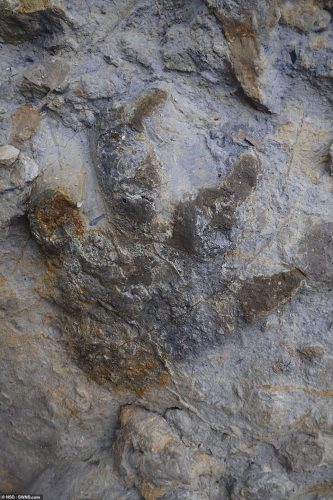
Preserving a Window to the Past
The discovery of these well-preserved footprints is a testament to the importance of careful preservation and scientific research. It allows us to step back in time and marvel at the creatures that once roamed the Earth. Such findings not only contribute to our knowledge of dinosaurs but also inspire future generations of scientists and enthusiasts.
The “treasure” of 145 million-year-old dinosaur footprints on England’s south coast is a remarkable revelation that allows us to explore the past in unprecedented detail. These footprints, with their preserved skin, scales, and claws, offer a unique window into the lives of dinosaurs that lived during the Early Cretaceous period. Through careful study and analysis, we continue to unravel the mysteries of our planet’s prehistoric inhabitants, expanding our knowledge of Earth’s ancient history and the creatures that once ruled the land.
